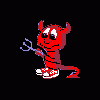Everything posted by Demonland
-
NAB Wk 3: 6/3 v. Adelaide (Elizabeth, SA) 4:00pm
http://www.melbournefc.com.au/match%20day%20information/tabid/11453/default.aspx
-
Rd 5: Sat 24/4 v. Brisbane (MCG) 7:10PM
http://www.melbourne...54/default.aspx
-
Training: Fri 26/2 at Junction Oval 10:00am
http://www.melbourne...53/default.aspx
-
NAB Challenge Wk 2: 27/2 v. Essendon (Visy) 1:00pm
http://www.melbourne...px?newsid=89016
-
Training 20/2 Leederville (Perth) 5:30pm
http://www.melbournefc.com.au/training%20times/tabid/8753/default.aspx
-
Training 16/2 Casey Fields @ 4pm
http://www.melbournefc.com.au/training%20times/tabid/8753/default.aspx
-
Rd 22: Fri 27/8 v. North Melbourne (MCG) 7:10pm
http://www.melbournefc.com.au/fixture/tabid/15354/default.aspx
-
Rd 21: Sun 22/8 v. Port Adelaide (AAMI) 1:10pm
http://www.melbourne...54/default.aspx
-
Rd 20: Sun 15/8 v. Hawthorn (MCG) 2:10pm
http://www.melbournefc.com.au/fixture/tabid/15354/default.aspx
-
Rd 19: Sun 8/8 v. Richmond (MCG) 2:10pm
http://www.melbournefc.com.au/fixture/tabid/15354/default.aspx
-
Rd 18: Sat 31/7 v. Brisbane (Gabba) 7:10pm
http://www.melbourne...54/default.aspx
-
Rd 17: Sun 25/7 v. Sydney (MCG) 2:10pm
http://www.melbournefc.com.au/fixture/tabid/15354/default.aspx
-
Rd 13: Sun 27/6 v. Adelaide (AAMI) 3:10pm
http://www.melbourne...54/default.aspx
-
Rd 16: Sun 18/7 v. Fremantle (Subiaco) 4:40pm
http://www.melbournefc.com.au/fixture/tabid/15354/default.aspx
-
Rd 15: Sun 11/7 v. Essendon (MCG) 2:10pm
http://www.melbournefc.com.au/fixture/tabid/15354/default.aspx
-
Rd 14: Sun 4/7 v. St. Kilda (Etihad) 4:40pm
http://www.melbournefc.com.au/fixture/tabid/15354/default.aspx
-
Rd 12: Mon 14/6 v. Collingwood (MCG) 2:10pm
http://www.melbourne...54/default.aspx
-
Rd 11: Sat 5/6 v. Carlton (MCG) 2:10pm
http://www.melbournefc.com.au/fixture/tabid/15354/default.aspx
-
Rd 10: Sat 29/5 v. Geelong (Skilled) 2:10pm
http://www.melbournefc.com.au/fixture/tabid/15354/default.aspx
-
Rd 9: Sat 22/5 v. Port Adelaide (TIO) 7:10pm
http://www.melbournefc.com.au/fixture/tabid/15354/default.aspx
-
Rd 8: Sat 15/5 v. West Coast Eagles (MCG) 2:10pm
http://www.melbournefc.com.au/fixture/tabid/15354/default.aspx
-
Rd 7: Fri 7/5 v. Western Bulldogs (MCG) 7:40pm
http://www.melbournefc.com.au/fixture/tabid/15354/default.aspx
-
Rd 6: Sat 1/5 v. North Melbourne (Etihad) 2:10pm
http://www.melbournefc.com.au/fixture/tabid/15354/default.aspx
-
13/2: Intra Club Practice Match & Casey Family Day
From: http://www.melbourne...53/default.aspx
-
Rd 4: Sun 18/4 v. Richmond (MCG) 1:10pm
http://www.melbournefc.com.au/fixture/tabid/15354/default.aspx




